Puerto Rican flan is a custard of eggs, canned milk and sometimes sugar blended together, then baked in a water bath over an amber crust of caramelized sugar. One thrill of the dessert comes in the serving of it. A flourishing flip of the pan to release the flan from it’s baking vessel along with a flood of caramel produced from its time in the fridge. The creamy texture of the dessert is the main attraction, though.
Serve flan on its own or with a handful of fresh berries…and coffee. You must have coffee.
*This post has been updated to include metric measurements.*
What is Flan?
Flan (or flan de vainilla as it’s also known) is a baked custard. It varies from other types of custard in that it thickens during the baking process, as opposed to being thickened and left to set. Flan is stupid-simple to prepare. After all, it only has 5 ingredient; well, 6 if you count water. A bain-marie (or water bath) regulates the baking temperature of the dessert to ensure a silky texture every time. The caramelized sugar transforms into a sauce during the chilling stage and, later, creates a sauce that bathes the custard upon de-panning.
Make your flan in either a large plain or decorative pan, or in individual portion sizes. Since I have a thing about the sugar- which I’ll tell you about later- I prefer to go the route that requires the least amount of handling.
What country does Flan come from?
Flan is a Latin American dessert. Its cousin, crème caramel, is French in origin, which means flans have been around since the early 1900s.
Many countries that were once Spanish colonies have their versions of this dessert. The Puerto Rican recipe relies heavily on milks (often canned) to produces their luxuriously smooth custard. Likewise, leche flan (from the Philippines) uses a good amount of milk; except with more egg yolks than whole eggs.
Vietnam uses a darker caramelized sugar, which creates a more bitter flavor. Other countries in Latin America have their own unique versions of the dessert. Cuba’s has more egg whites, whereas the Dominican Republic traditionally makes theirs with egg yolks. Here, we’re sticking with what I know best: the flan from Puerto Rico.
What Does Flan Taste Like?
Flan is a vanilla-flavored pudding with a silky texture made even more more delicious by a caramel layer that it’s baked on.
The flavor of yours depends upon the amount of extract, or the flavor of extract, that you add to it. This recipe is a caramel-vanilla dessert. But, Puerto Ricans are ingenious when it comes to creating new flan recipes. There’s the standard flan recipe, flan de coco (made with coconut milk), Puerto Rican flan de queso (or Puerto Rican cheese flan), and even pumpkin flan during the holiday season. My favorite is this traditional flan recipe or coquito flan (or coconut flan with rum) being a very close second.
What Are the Ingredients in Flan?
The flan mixture is made with large eggs, evaporated milk, sweetened condensed milk, salt, vanilla, water, and sugar. Simple ingredients go into making the best dessert, which I’m always down for.
A cake pan (or other flan mold) is what you will need to bake the flan in. You can do a plain flan- which is what I prefer- or a decorative one baked in a fancy bundt pan like this one. You know I love a good bit of flair, however, when it comes to making flan, I stick with a flat-sided pan because I want to get the most out of my custard. The more nooks and crannies your pan has, the less caramelized sugar you’ll get when you turn out your flan. You’ll also lose a good amount of “wow” because, after the caramelized sugar hardens in the pan, it ceases to take on all of the curves or corners your pan has. That means the actual custard won’t have those sharp or rounded edges you thought it would have; not on the top, at least.
How Do I Make the Caramel Sauce for Flan?
The flan bakes in caramelized sugar that later becomes a caramel sauce. First, you must melt a cup of sugar together with water in a non-stick pan, then bring it up to a gentle simmer. Allow the water to slowly evaporate in the pan while simultaneously melting the sugar to a liquid state. The longer it simmers, the darker and more caramel-ly the sugar becomes. Too dark and the sugar will burn and taste acrid. If the boiling time is too short, the sugar will have no color or caramel-flavor.
How Long Do I Cook the Sugar?
Because the water must be cooked (evaporated) away from the sugar in order for the sugar to do its thing, you should start with the least amount of water possible. I always use a non-stick medium saucepan too: it makes pouring the caramelized sugar less messy. Add the filtered water to the pan, then, right into the center of the pan, pour the sugar. This keeps the sugar from the sides of the pan. Gently stir the sugar and water together using a wooden spoon (metal spoons will get too hot for this and plastic will melt).
Bring the sugar up to a simmer over medium heat, stirring until the liquid begins to bubble. Once it starts simmering, stop stirring.
Boil the sugar 7 1/2-8 minutes, or until the sugar takes on a deep amber color (a candy thermometer should read 320°F- 350°F). Take care not to allow the sugar to cook too long. In a matter of seconds, the sugar goes from amber to burnt. It’s happened to me more times than I care to admit. Walking away from a pot of boiling sugar- especially after it’s started to change color- is the biggest mistake sugar-cookers make. Just stay there and nurse it until it’s finished. But, the most important thing to remember is: don’t stir it once it’s started to boil and don’t get it on your skin.
Why Does My Caramelized Sugar Look Funny?
The biggest issue you might face when it comes to melting the sugar is crystallization. Crystallization happens when one grain of undissolved sugar is reintroduced to the melted sugar. Sometimes this happens because a rogue sugar crystal remained on the side of the pot or on the spoon. That sugar crystal sneaks it way back into the melting(ed) sugar and causes a chain reaction that ends in the surface of your melted sugar taking on a “frosted over lake” appearance. The only solution to such a problem is to start again.
Water used in this stage acts only as a mediator between the heat and the sugar. It gives the sugar a head-start on melting because, while we stir the sugar in the water, it’s dissolving. By the time the sugar is melting, there’s little to no chance of crystallization; unless, of course, we get an interloper. We avoid that by being careful not to get sugar crystals on the sides of the pan, and/or by using a wet pastry brush to brush stray crystals into the pan before the sugar starts to boil.
If your sugar crystallizes, there’s nothing to do but start over again.
How Do I Know When to Stop Cooking the Sugar?
Once the sugar reaches the amber color, carefully pour it into a 8″ or 9″ baking pan. The pan will become extremely hot when the sugar is poured in, so use a towel or oven mitt to hold onto the pan to keep from burning yourself. Swirl the sugar onto the bottom of the pan.
If your sugar hardens after you’ve swirled it, CONGRATULATIONS! You did it right! You are cooking the sugar to firm-ball stage, which means: as it cools, the sugar will become firm. Now just set the caramelized mold aside to allow it to cool completely.
If the sugar doesn’t firm up after a minute or two of cooling, you didn’t boil it long enough. Unless you absolutely have to have a perfect flan, bake it as is. While it may not be the deep amber color you want, it’s still totally fine to proceed. It’s just not worth trying to scrape out the sugar and reheat it just to pour it back into a gunky pan.
If you’ve overcooked your sugar and it smells bitter and acrid, scrap it. Place the pot in your sink and pour hot water into it from the faucet. Keep your hands, arms, and face from the pot because the steam will be intense and the water and sugar will bubble up. Allow the water to melt the sugar. If it’s taking too long, place the pan, filled with water over the stove and bring it to a boil to dissolve the caramel faster.
How Do I Make the Custard for Flan?
The caramelizing of the sugar and the wait for the flan to cool are the hardest parts of this recipe.
To make the custard mixture for the flan, pour the cans of evaporated and sweetened condensed milks, the water, and the eggs into a blender or food processor. Add a pinch of salt to balance the flavors, along with the vanilla bean paste or vanilla extract. I use vanilla bean paste because of the flecks of vanilla. It makes my flan look prettier and less plain. Vanilla extract, or whatever extract you fancy will also work.
Blend the mixture for 1 minute, or until smooth.
How Long Do I Bake the Custard?
After you blend the mixture, pour it through a sieve into the sugar-lined pan. Straining the custard removes any of those mucous-like strings of egg; it also helps lessen the amount of bubbles and foam created by the blender.
Put the flan pan into a larger pan, then fill that larger, outer pan with boiling water until it reaches half-way up the sides of the flan pan. Carefully slide the flan into a 350°F (177°C) preheated oven and bake for 1 hour. Check it after 45 minutes of baking. If it looks like it’s getting too brown, lay a piece of aluminum foil over the pans to slow down the browning.
After the cooking time has elapsed, carefully remove the larger pan from the oven, then remove the smaller pan from the water-filled one.
After it’s baked, the center of the flan is not going to be solid. So, if yours still jiggles, like jello, that’s perfectly fine. As the flan cools in the fridge, it will grow more solid. Now, if the custard is sloshing around like it was never baked, the issue may be that some water was introduced to the custard while you were adding it to the larger pan. As a result of that added water, the flan won’t ever set, so the next best thing is to throw it into your ice cream machine and turn it into flan ice cream.
Allow the flan to cool to room temperature on the countertop before covering the pan with plastic wrap.
How Do I Make Individual Flanes?
To make individual flanes, just divide the caramelized sugar equally among the cups of a muffin tin.
Strain the custard into a larger bowl first, then into the muffin tin. This makes pouring it into the cups easier. Bake the flan on a flat dish filled with an inch of water for 30 minutes.
Alternatively, you can divide the caramelized sugar equally amongst 4 ramekins. Strain the custard into the prepared ramekins and set them into a baking dish filled with an inch-and-a-half of hot water. Bake for 45 minutes to 1 hour.
Do I Remove the Flan From the Pan When It’s Hot or Cold?
Flan is a cold dessert. If you dip your spoon into the custard now, you’ll get a spoonful of gloopy pudding. Place the flan into the refrigerator to chill and firm up.
The way to ensure all the caramel from the flan mold comes out is to refrigerate the flan for at least 24 hours. Forty-eight hours is even better because it gives all of the sugar a chance to liquify. But, 24 hours is sufficient.
Loosen the edges of the flan from the pan with a wet knife that’s been dipped in hot water, and run it along the sides: between the flan and the pan.
How Do I Get All of the Caramel Out of the Pan?
Invert a plate onto the pan and flip the two over. The flan should schloop right out of the pan if you’ve loosened it with the knife. The caramelized sugar liquid will start to ooze from the pan onto the plate (12 o’clock on the white plate in the image). If you don’t hear the schloop or see the caramel, the flan isn’t out of the pan. Flip it back over and dip the bottom of the pan into 2″ of hot or warm water to loosen the sides.
Now attempt the flip, schloop, ooze, “ooooh” thing again. That should do it. Leave the pan inverted for about 5 minutes so you get as much of that caramel onto the flan as possible. If it doesn’t schloop flip it back over and attack it with a spoon. Life is too short to cry over flan.
More than likely, you’ll have a thin sheet of sugar still left in the bottom of the pan. You can heat the bottom of the pan over the stove to melt the sugar that remains in the caramelized pan and pour it over the flan. Or, just fill the pan with boiling water to melt the sugar and discard it.
How Do I Serve Flan?
Flan needs nothing but a plate and fork. Serve your yummy dessert cold, straight from the fridge. If you must get fancy with it, top your slices with a dollop of whipped cream or a handful of fresh berries.
My favorite way to serve it is with a cup of café con leche. This makes it officially a Puerto Rican dessert (not that it wasn’t before).
How Do I Store Flan?
Store leftover flan lightly covered in plastic wrap or in an airtight container in the fridge for 3 to 4 days.
Because it is an egg custard, it must remain refrigerated as much as possible.
Can I freeze it?
I don’t recommend freezing flan because the structure doesn’t stay the same upon thawing. Flan that is frozen and later thawed is curdled, shard-like, and grainy.
I recommend you make it a day or two in advance rather than freezing and thawing.
So, now you’ve not only found out about my most traumatic baking experience, you also got the best Puerto Rican flan recipe to boot! Be sure to pin this creamy custard dessert to your sweets or dessert Pinterest Board. This dessert isn’t just for the holidays, after all!

Authentic Puerto Rican Flan (Baked Egg Custard)
at Sense & EdibilityEquipment
- 8" or 9" cake pan (3" tall)
- blender or food processor
- strainer
Ingredients
Caramelized Sugar Topping
- 1 cup (200 grams) granulated sugar
- 1/4 cup (60 milliliters) water
Flan Custard
- 7 large eggs
- 2 14-ounce cans (792 grams) sweetened condensed milk
- 1 12-ounce can (354 milliliters) evaporated milk
- 1 cup (250 milliliters) water
- 1 tablespoon (15 milliliters) vanilla bean paste or vanilla extract
- 1/2 teaspoon (3 grams) kosher salt
- 1/8 teaspoon ground cinnamon optional
Instructions
- Preheat your oven to 350°F. Bring a pot of water to a boil for the bain-marie (water bath) which you'll bake the flan in. Have a pan (larger than the pan you'll prepare the flan in) ready to create the bain-marie.
Prepare the Caramelized Sugar
- In a non-stick pan, add the water to the pan, then, right into the center of the pan, pour the sugar. This keeps the sugar from the sides of the pan. Gently stir the sugar and water together using a wooden spoon and bring the mixture up to a gentle simmer over medium heat.
- Once the sugar begins to simmer, stop stirring. If, at this point, you see any sugar crystals on the sides of the pan, use a wet pastry brush to brush the crystals down into the pot. Boil the sugar 7 1/2-8 minutes, or until the sugar takes on a deep amber color (a candy thermometer should read 320°F- 350°F).
- Once the sugar reaches the amber color, carefully pour it into a 8" or 9" cake pan. The pan will become extremely hot when the sugar is poured in, so use a towel or oven mitt to hold onto the pan to keep from burning yourself. Swirl the sugar onto the bottom of the pan.
- Set the pan aside to allow the sugar to cool and harden while you prepare the custard.
Prepare, then Bake Vanilla Flan
- Pour the eggs into your blender. Pulse the eggs for 30 seconds to beat them slightly.
- Next, pour the sweetened condensed milk, evaporated milk, water, vanilla bean paste (or vanilla extract) into the blender. Blend the mixture for 1 minute, or until smooth.
- Once smooth, pour the mixture through a sieve into the sugar-rimmed pan to remove any mucous-like strings of egg and to reduce the amount of bubbles and foam created by the blender.
- Place the flan pan into the larger pan, then fill the outer pan with boiling water until it reaches half-way up the sides of the flan pan. Take care not to splash any water into the custard.
- Carefully slide the pans into the pre-heated oven and bake for 1 hour. The flan will still jiggle like jello when fully baked. After 45 minutes of baking check the color of the flan: if it looks like it's browning too much, lay a piece of foil over the pans to slow down the caramelization.
Chill the Baked Flan
- After the baking time has elapsed, carefully remove the larger pan from the oven, then remove the flan pan from the water-filled one. Allow the flan to cool completely on the countertop before covering the pan with plastic wrap and refrigerating.
- Refrigerate the flan for 24-48 hours. The longer, the better as it allows time for all of the sugar to liquify.
Flip to Serve
- Before turning out the flan, loosen the sides of the custard from the pan. To do this, take a knife, dipped in hot water, and run it along the sides: between the flan and the pan. Invert a plate onto the pan and flip the two over. The flan should schloop right out of the pan. The caramelized sugar liquid will start to ooze from the pan onto the plate.
- If you don't hear the schloop or see the caramel, the flan isn't out of the pan. Flip it back over and dip the bottom of the pan into 2" of hot water to loosen the sides, then attempt the flip again. If it doesn't schloop flip it back over and enjoy it with a spoon, instead.
- Leave the pan inverted for about 5 minutes to coat the flan in as much of the caramel as possible.Slice the flan into serving sizes and serve cold: straight from the fridge. You can also top your slices with a dollop of whipped cream or a handful of fresh berries.
- Store leftover flan lightly covered in plastic wrap in the fridge for 3 to 4 days.
Notes
To make individual flanes:
Mini Flanes:- Divide the caramelized sugar equally among the cups of a muffin tin.
- Strain the custard into a larger bowl first.
- Pour the custard into the muffin tin in equal measures.
- Set the muffin tin on a flat sheet pan or baking dish filled with an inch of hot water.
- Bake for 30-40 minutes at 350°F.
- Chill for 8-48 hours and turn out onto a large platter.
- Divide the caramelized sugar equally amongst 4 ramekins.
- Strain the custard into the prepared ramekins.
- Set the ramekins into a baking dish filled with 1 1/2" of hot water.
- Bake for 45 minutes to 1 hour.
- Chill for 8-48 hours and turn out onto individual plates.
Notes on Caramelizing the Sugar:
- If the sugar doesn't firm up after a minute or two of cooling, you didn't boil it long enough. Unless you absolutely have to have a perfect flan, bake it as is: it's still totally fine to proceed.
- If you've overcooked your sugar and it smells bitter and acrid, throw it away and start again. Place the pot in your sink and pour hot water into it from the faucet. Keep your hands, arms, and face from the pot because the steam will be intense and the water and sugar will bubble up. Allow the water to melt the sugar. If it's taking too long, place the pan, filled with water over the stove and bring it to a boil to dissolve the caramel faster.
Notes on Baking the Flan:
- After it's baked, the flan is not going to be solid. So, if yours still jiggles- think jello- that's perfectly fine. As the flan cools in the fridge, it will grow more solid.
- If, however, the custard is sloshing around after an hour of baking, the issue may be that some water was introduced to the custard while you were adding it to the larger pan. As a result of that added water, the flan will not set. Allow the custard to cool before chilling it completely in the fridge. When ice-cold, churn it in an ice cream machine to make flan ice cream.

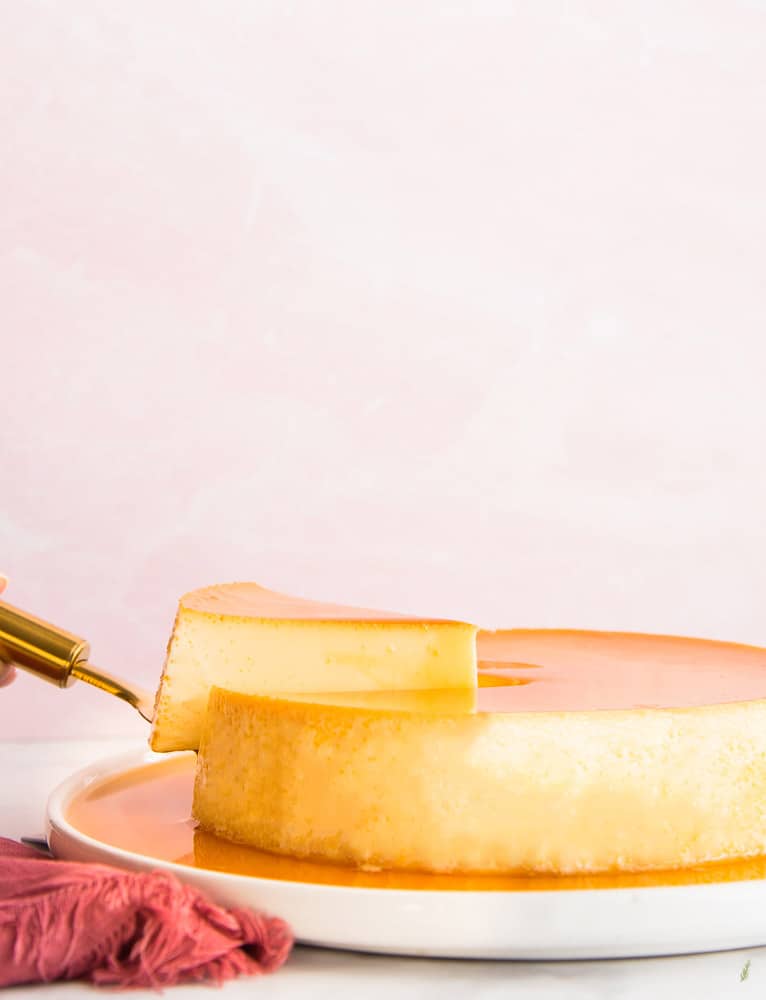
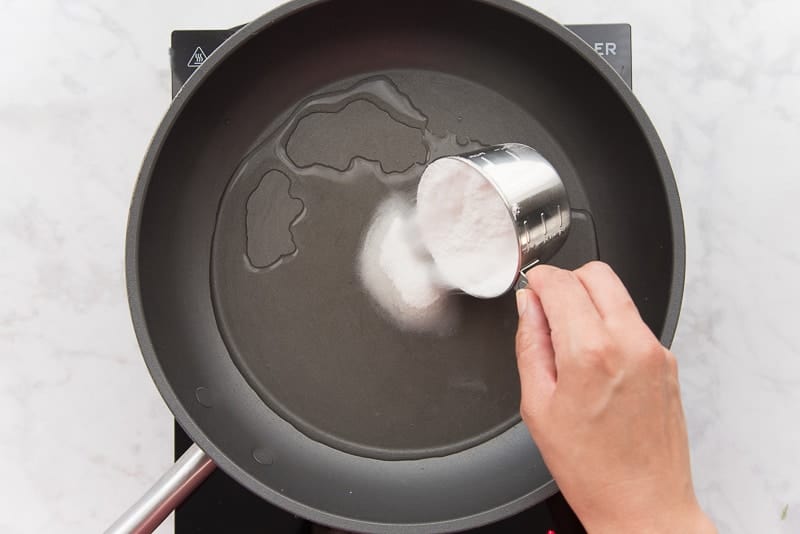
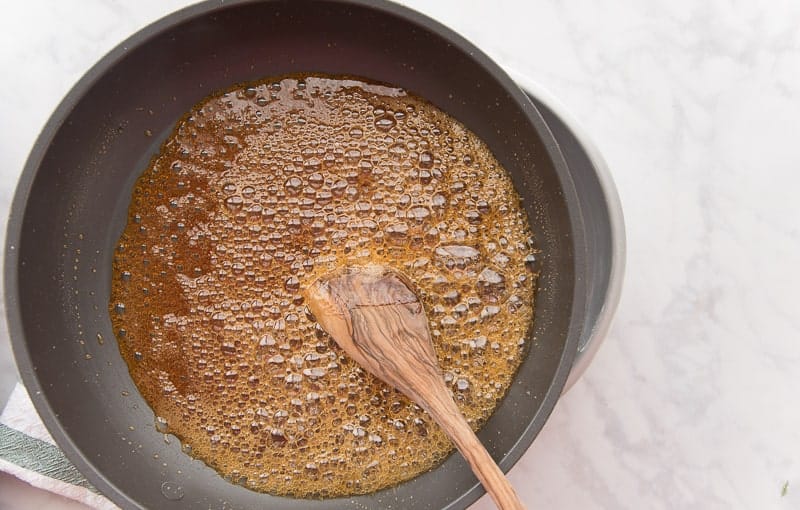
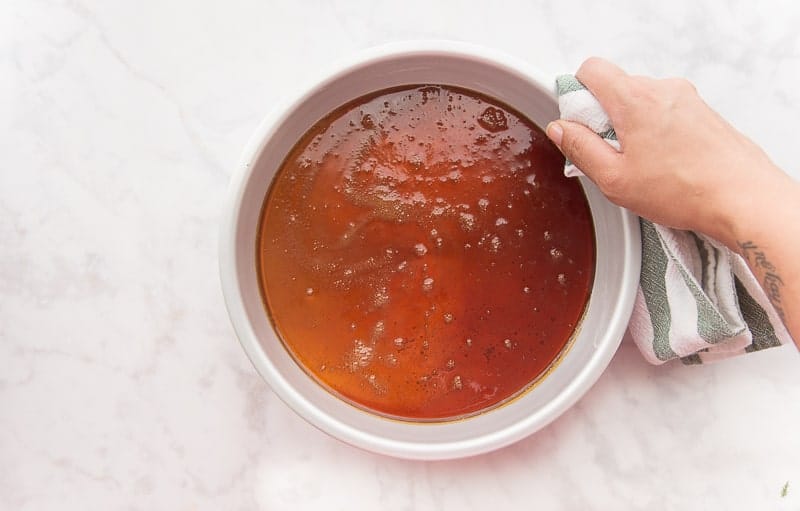
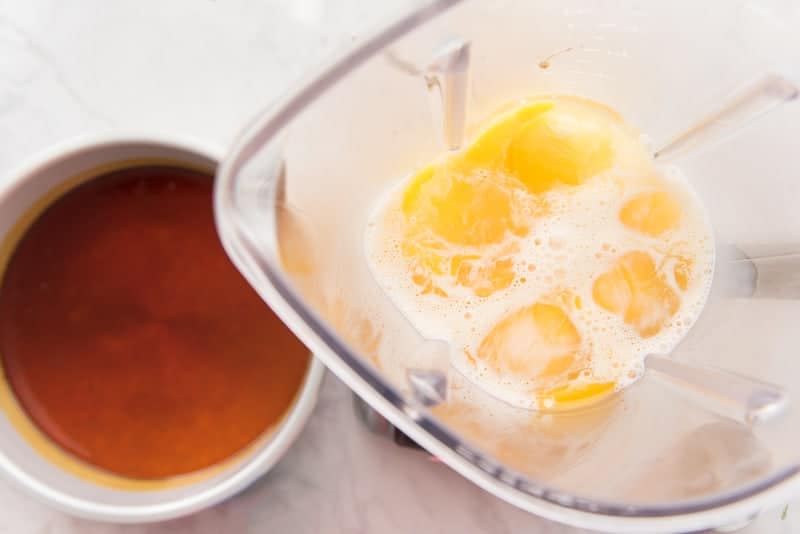
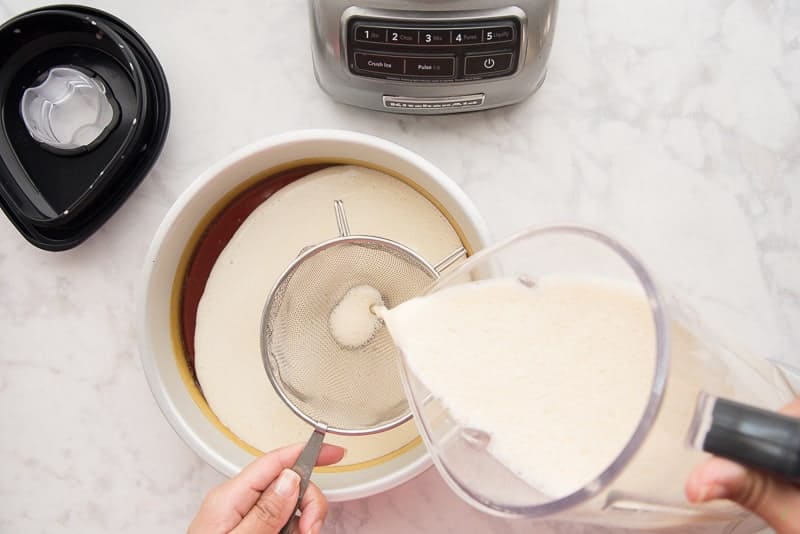
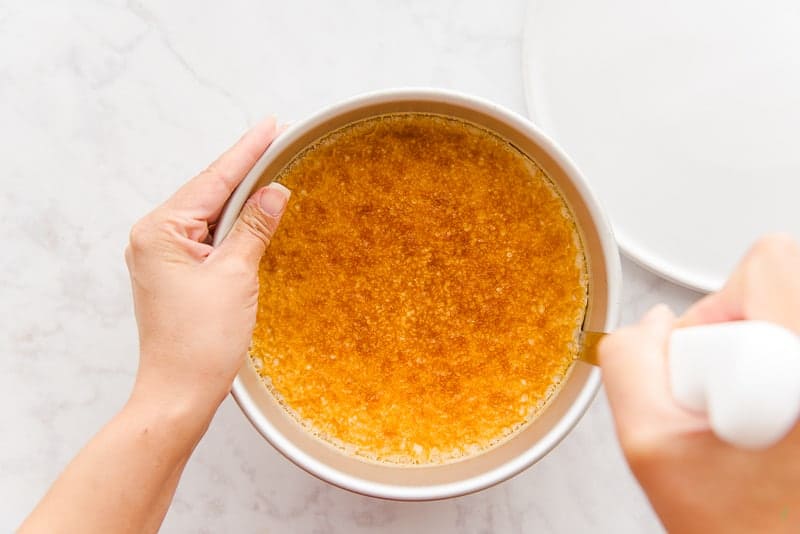
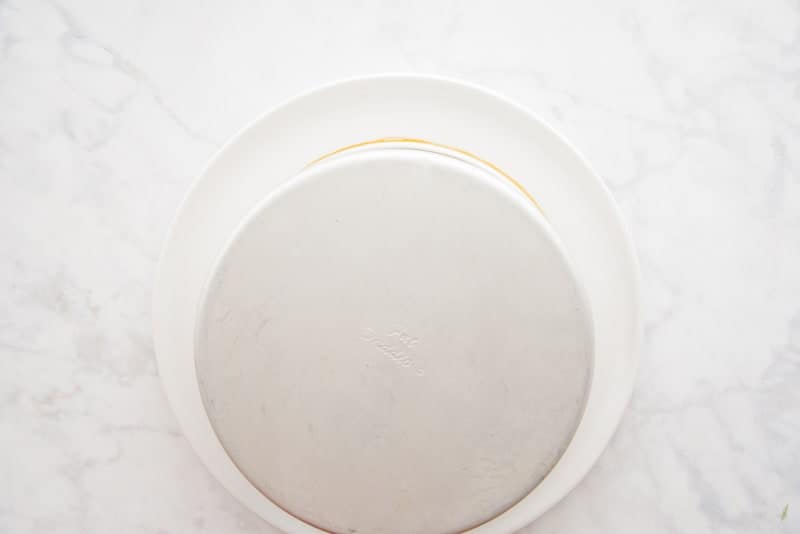
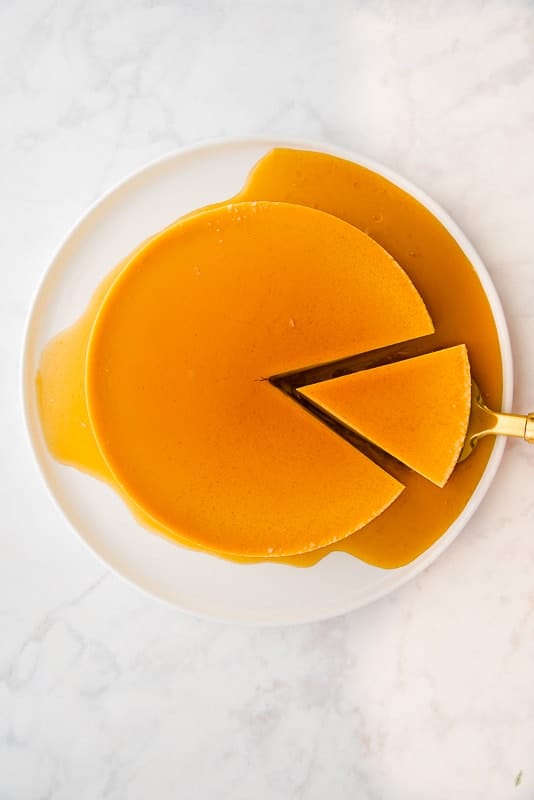
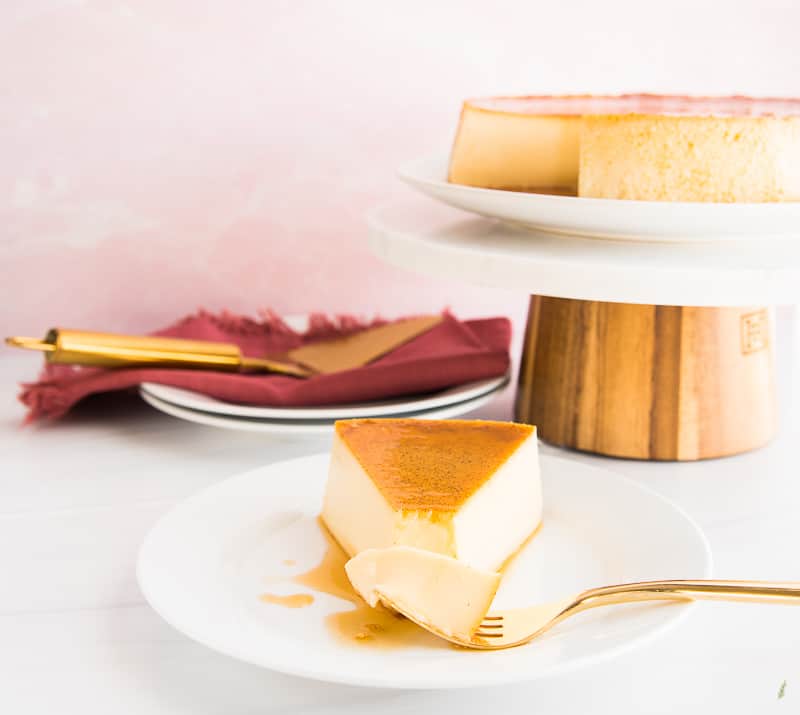
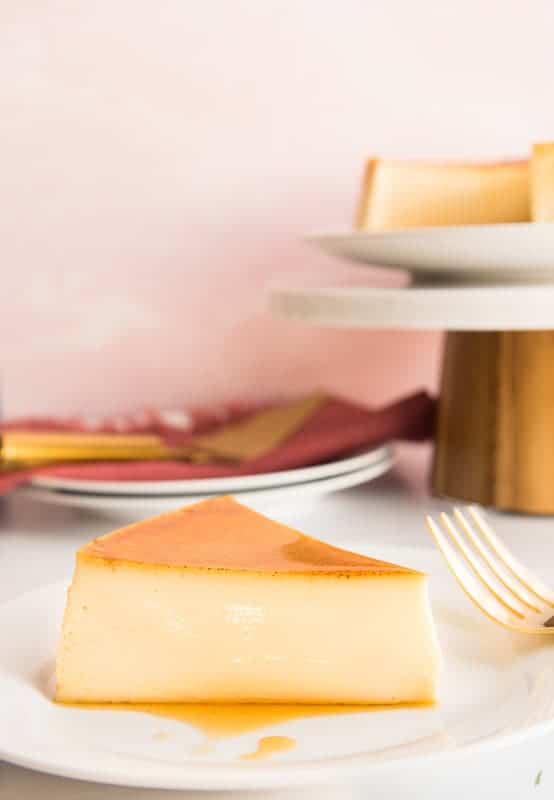
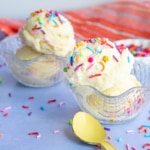
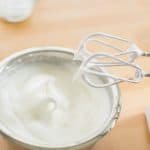
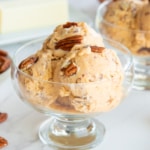

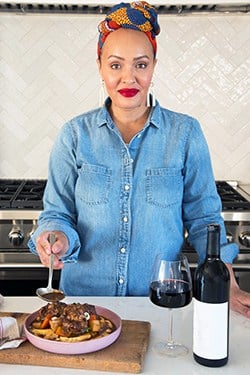
This was by far THE BEST flan recipe I’ve ever followed. It was smooth, the flavor was clean and not eggy, the sweetness level just perfect and I liked how thick it was because the pan suggested is 3″ not 2″ deep. Thank you so much for sharing this recipe!
I’m so glad you mentioned how the flan didn’t taste eggy. People always look at me crazy when I say I hate an eggy flan, but you get me!
MARTA! This was hilarious I read your flan experience to my husband we laughed so hard. Yet! Still sorry for the pain you endured both your hand and ego. You are my new favorite chef!!
I’m so glad my pain brings you joy😜. I still cringe and my backside still clenches whenever I go to pour that sugar! It was so traumatic, especially since I was trying to impress Hector, LOL! Happy holidays to your and yours. I’m so glad you’re here.
If I want to make a cheese flan from this recipe, would I omit 1 can of condensed milk and add 8oz cream cheese? Also, what if I feel like adding another flavor like Amaretto, can you tell me how to add?
I’ll preface my response by saying I haven’t tested these substitutions so I can’t guarantee the results if you change the original recipe based on these suggestions. I would use only one can of condensed milk and use 8 ounces of room temp cream cheese. To change the flavor, replace the vanilla with the new flavor you want. Again, I can’t vouch for these changes since I haven’t tested them, but hopefully they work for you.
I appreciate your response. Thank you! I have to say I have tried multiple recipes from your site and I am so pleased. I reached out because there are so many cheese flan recipes out there, but I’m scared to try…lol. Thanks for sharing your recipes with the masses.
Of course, Lina. I’ve been meaning to develop and test a flan de queso, but time has gotten the better of me. If you like it, let me know, and I’ll work on getting on the site. Happiest of holidays to you and yours.
Flan recipe was a huge hit!!! The recipe is super easy to follow. I’m so happy I read the recipe in its entirety cause I had a rogue sugar crystal sabotage my caramel and had to scrap it and start again. Thank you for sharing such a wonderful, easy, tasty, addictive recipe!!!!
Those sugar crystals are the worst, Sonia, but I’m glad you conquered it and enjoyed the flan!
Hi! If I made this flan but flavored it with chai (cardamom, assamese tea leaves, cinnamon) would that work? I’m guessing I’d have to boil the milks with the tea to get the flavor right?
Gosh, that sounds so freakin’ amazing. Yes, I would heat just the evaporated milk, with the spices in it, up to the steaming point. Allow the spices to steep in the milk until it’s completely cool, then proceed with the recipe as instructed. Now I want to make this!
I have made this recipe twice now, both times with wonderful results. So silky smooth and delicious! Top shelf comfort food and surprisingly easy to make. Thank you for sharing the recipe!
That means a lot to me, Vicki! I’m so glad you enjoy it as much as we do.